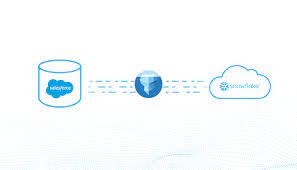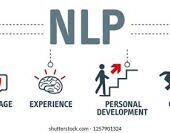Harnessing the Power of Salesforce Marketing Cloud and Snowflake
Two of the most influential trends in marketing technology (MarTech) and analytics today are Salesforce’s Marketing Cloud (SFMC) and Snowflake’s data warehousing platform. SFMC offers marketers a robust Journey Builder experience, while Snowflake eliminates data silos, making more data accessible to analysts than ever before.
Both platforms are next-generation, cloud-first solutions that open new possibilities for marketers and are already helping to create more compelling and relevant experiences for consumers. A shared commitment to simplifying the end-user experience while unlocking a vast array of new data capabilities makes these solutions powerful examples of “soft technology.”
Soft Technology: Snowflake and SFMC
“When I speak about the power and virtues of technology, I am referring to soft technology: technology that is flexible, that is under our control.” — Don Norman
What makes a technology great is its ease and flexibility for end users. Both SFMC and Snowflake simplify the user experience for their target users with remarkable results.
SFMC’s Journey Builder allows marketers to build sophisticated journey orchestration flows on a canvas similar to how they might draft a journey on a whiteboard. Once configured, there’s no need to call IT for support; it’s time for delivery.
Snowflake targets analysts, data engineers, and data scientists, breaking down data silos and removing traditional storage and processing constraints. This allows them to focus on solving business problems rather than dealing with perpetual data consolidation and cleansing. Snowflake also simplifies working with different types of data, such as unstructured data like logs or customer activity signals, through its “variant” datatype.
The Perils of “Hard Technology” for SFMC Users
“Hard technology remains unheedful of the real needs and desires of users. It is a technology that, rather than conforming to our needs, forces us to conform to its needs. Hard technology makes us subservient;” — Don Norman
SFMC’s Journey Builder users are most productive when their source data is well-prepared for marketing purposes. However, as marketing needs evolve, new customer profile data and segments are required, often necessitating IT intervention and the use of complex SQL queries or programming languages.
An inefficient process often emerges:
- Marketer identifies missing data for a campaign.
- Marketer requests new information from IT.
- IT prioritizes and clarifies the request.
- IT estimates and executes the work.
- IT tests and seeks marketer approval.
- IT schedules production roll-out.
This lengthy process can slow down time-to-market for campaigns and hinder marketing agility.
Bridging Snowflake and SFMC to Avoid Hard Technology
Low-code and visual SQL tools allow campaign analysts to remain business-focused and meet most of their daily data needs without relying heavily on IT. These tools are now more powerful thanks to modern data warehousing platforms like Snowflake, which supports SQL-like querying of unstructured data directly.
Low-code solutions help marketers maintain productivity within SFMC’s Journey Builder by enabling them to autonomously explore and retrieve new customer data and segments.
Checklist for Low-Code & Visual SQL Tools
For maximum impact, look for low-code and visual SQL tools that:
- Allow building selection queries using a point-and-click interface.
- Utilize Snowflake’s computing power for fast query completion.
- Provide access to all relevant data for marketers.
- Ensure quick loading of segments and customer data into SFMC.
- Avoid exceeding SFMC API limits and additional fees.
- Update segment and customer data timestamps in SFMC promptly.
- Integrate directly within SFMC without needing a separate web application.
Simplifying Data Integration with Skyvia, Integrate.io, and GetCensus
Skyvia
Skyvia allows you to replicate Salesforce Marketing Cloud data to Snowflake with minimal configuration. It creates tables for cloud data automatically and keeps the data updated with incremental updates.
Integrate.io
Integrate.io provides a lightning-fast CDC platform for Salesforce data integration, offering robust ETL and ELT capabilities to connect your Salesforce data with hundreds of other apps. Integrate.io’s low-code interface allows for easy configuration and seamless data migration.
GetCensus
GetCensus enables data synchronization between Snowflake and Salesforce Marketing Cloud in four simple steps:
- Connect Snowflake.
- Connect Salesforce Marketing Cloud by creating an API key.
- Define core data using a SQL statement.
- Schedule the data sync.
By leveraging these tools and platforms, marketers can enhance their campaigns and improve customer experiences through efficient and effective data integration and management.













